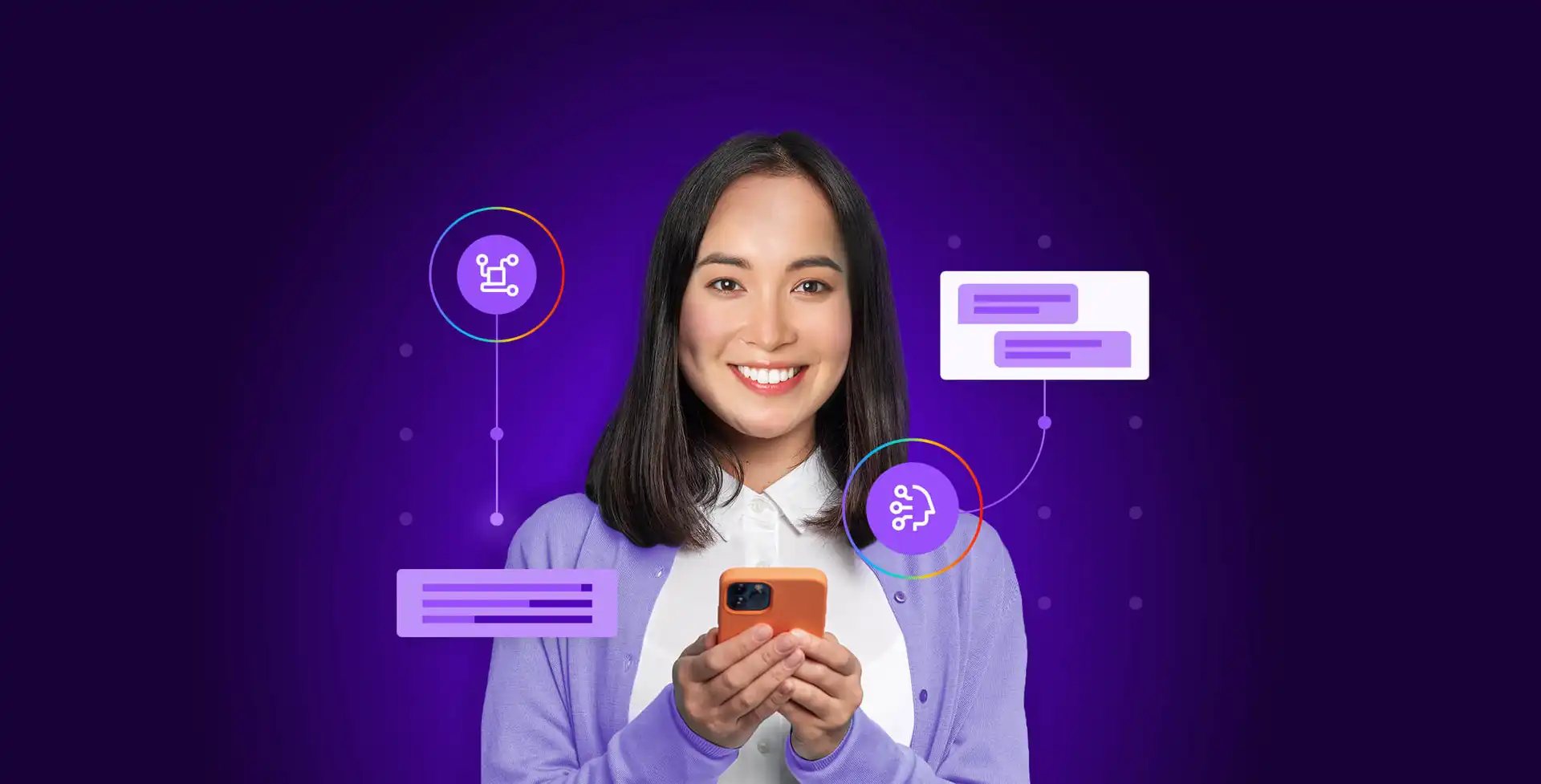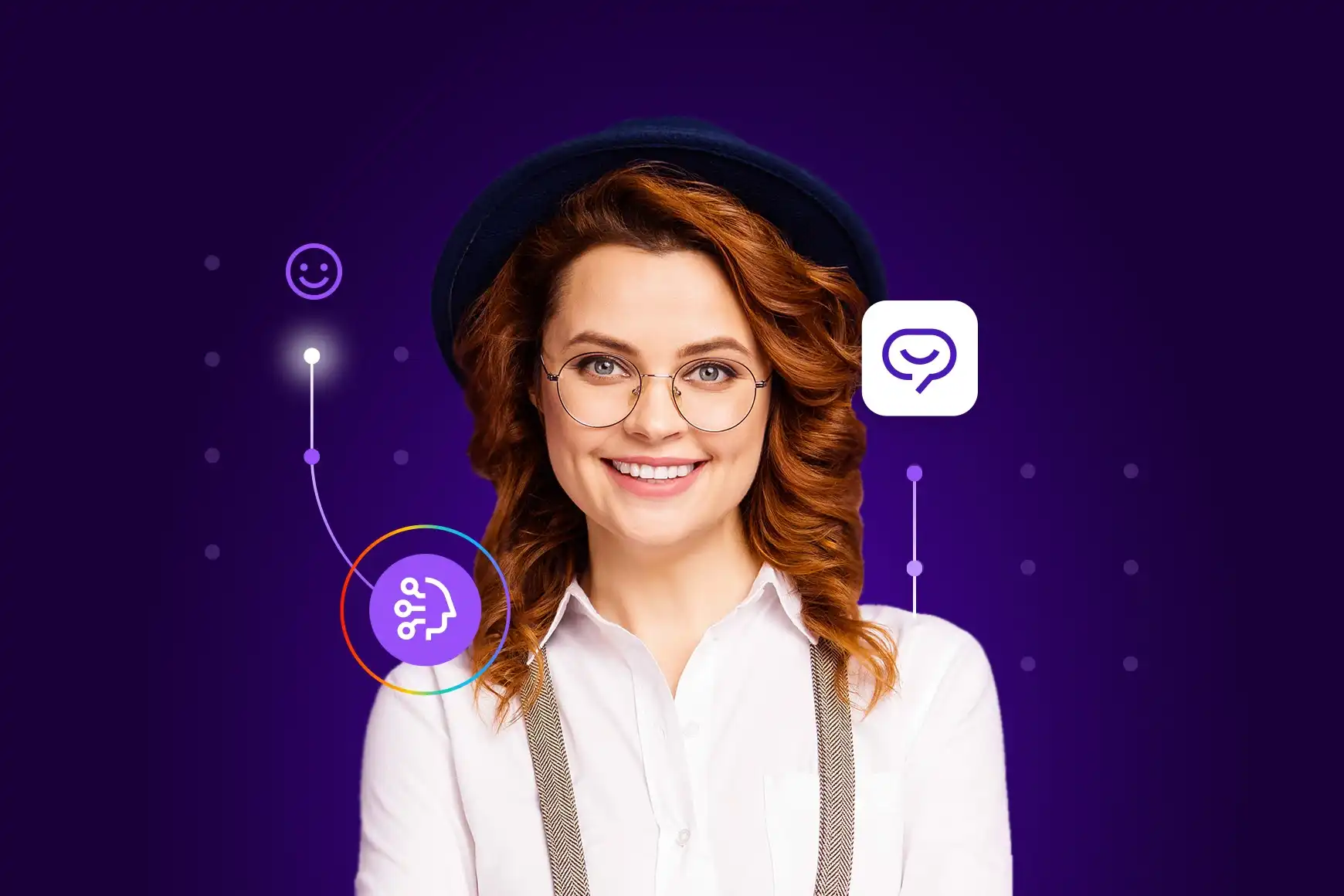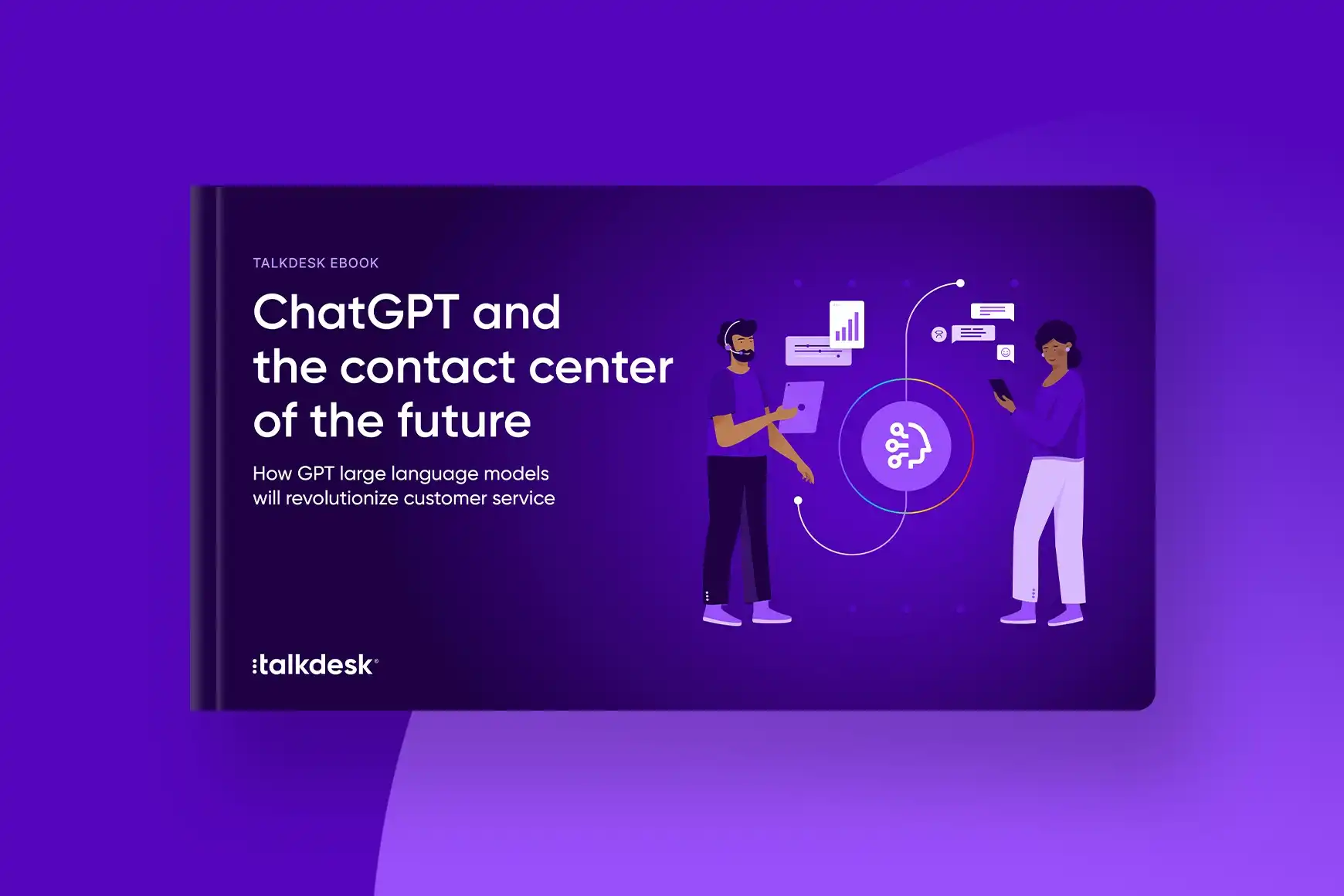A primer on ChatGPT, large language models, and generative AI

By Ben Rigby
0 min read

What does this word soup mean for the contact center?
ChatGPT has been in the press like an exploding ball of confetti. Tech companies talk about how it’s going to transform software. Gaming companies predict that it will add a dynamic, human-like speaking capability to its characters. Teachers are trying to reimagine education now that plagiarism has become undetectable overnight. Microsoft’s Bing suddenly seems like a contender to Google with its integrated ChatGPT functionality. And virtual agents for customer service and conversational analytics are about to take a huge leap forward.
The news cycle has been so fast, it’s been hard to keep up with all the terminology. Depending on which article you read, you might see the terms ChatGPT, GPT, GPT-3, GPT-4, large language models (LLM), or generative AI all used interchangeably. And you wouldn’t be blamed for feeling confused about them all. In this post, I’ll provide a primer on ChatGPT, large language models, and generative AI, and discuss how these revolutionary technologies are positively impacting the contact center.
Large language models.
So what are people talking about when they say that ChatGPT will transform the contact center (or any other) industry? They’re talking about the type of AI model that underpins ChatGPT. This type of model is called a large language model or LLM. It’s large because it’s doing a massive number of calculations for every prediction that it makes. These models are also trained on an equally massive amount of data, like almost all of the digitized written word, such as the whole internet.
It’s a language model because its focus is predicting sequences of words. What this means is that when given a prompt, the model can predict what comes next. So, if you were to give the prompt “Row row row your ____”, the model can predict that the next word is “boat.”
This latest crop of large language models can predict much more than one word, however. When given a prompt such as, “The impact of IVRs on the quality of customer service has been…” an LLM can predict or complete a few paragraphs of very reasonable text describing the historical impact of IVRs in customer service. For this reason, these models are also referred to as text completion models. Given all of the data that the model has “read” previously, it can complete the next logical sentence, paragraph, or essay with a human-like quality.
LLMs do not work with images, they don’t do statistical analysis, they don’t do calculations, and they don’t fact-check. They just operate in the domain of language—the written word. But for any industry that deals primarily with language—like the contact center—just focusing on language is a lot! The contact center helps people resolve issues via spoken or typed language. Language is at the core of what the contact center does and it’s why the impact of LLMs on customer service is so profound.
GPT.
We all know what chat means. But what is GPT? GPT stands for Generative Pre-trained Transformer. It describes a family of LLMs that have been built in a particular way. Each generation of these models has an increasing number of “parameters,” which you can think of like neurons in the brain. GPT-1 has 117 million parameters, GPT-3 has 175 billion parameters, and GPT-4 will have many more parameters.
To date, adding more parameters has resulted in more capable models. If you’ve played with ChatGPT, which uses GPT-3 under the hood, you know that the text completions are very good. In particular, it was the latest iteration of GPT models, referred to as GPT 3.5 DaVinci, that crossed the chasm from interesting to amazing.
While ChatGPT is not available outside of the chat interface on OpenAI’s website, many of these GPT models are available from OpenAI via paid APIs. Because of OpenAI’s cozy relationship with Microsoft, these APIs are also available for paid use via Microsoft Azure. This fact is significant for contact centers because Azure adds the kinds of security, reliability, compliance, and data privacy factors that contact centers require.
However, there are many other GPT and LLM models available from other vendors, also on an open-source basis. Google, for example, introduced its LLM, called Bard, and announced a $300m investment in Anthropic—a startup that builds LLMs. Another popular open-source LLM is called Bloom. In other words, there are a wide variety of options for building GPT software with LLMs. OpenAI is not the only game in town.
ChatGPT.
ChatGPT is the term you’ll see most often used and misused. ChatGPT is a chat application that can hold a human-like conversation about almost any topic. It was built by a for-profit startup called OpenAI, which has received a significant investment from Microsoft. At the moment, ChatGPT utilizes an undisclosed version of GPT created by OpenAI, which has been further tuned to perform well in chat-like conversations.
It’s this application that has generated the flurry of press and excitement, for two reasons:
- It seems like magic.
- It’s accessible to everyone.
It seems like magic because it seems human. You ask a question about espresso and you get a conversational answer as if from a barista. You ask a question about epilepsy and you get a response that could come from a medical researcher. And when compared to many people’s experiences with chatbots that seem mostly to say, “Sorry, I didn’t understand that,” this experience does seem like alchemy.
Second, it’s accessible to everyday people. While this kind of capability may have been available only to researchers and data scientists in the past, ChatGPT is the first application that is available and understandable to the general public. Whether you’re a 10-year-old kid researching a homework assignment or an engineer looking for coding advice, ChatGPT is accessible and easy to use.

WEBINAR
ChatGPT and the future of customer service
Learn how ChatGPT will fundamentally change our understanding of customer service in this free webinar.
Generative AI.
That brings us to our final term, generative AI. Generative AI is an umbrella term, which refers to any of the AI models that generate a novel output based on an input, often called a prompt. This broader term encompasses models that produce language, visual imagery, and audio.
You may have heard about Dall-e, another product of OpenAI, which can produce beautiful images when given a prompt. Or Jukebox, which generates music as raw audio. These generative AI models don’t necessarily use LLMs, but some do incorporate LLMs in an effort to understand the meaning of a prompt.
For the contact center, audio and visual models are less interesting at the moment. That being said, models that produce audio outputs will surely hit their stride in the next several years, which will have a transformative impact on voice conversation. Voice generation models take a small sample of recorded voice conversation and create a simulated voice that can be used by software systems programmatically. This could be a game-changer for contact centers.
How ChatGPT, generative AI, and LLMs are revolutionizing contact center operations.
While these technologies are new and we’re still learning more about their effects and ethical implications, it’s clear that they have demonstrably positive impacts on contact center operations. Here are just a few of the exciting new ways that contact centers can use Generative AI, ChatGPT, and LLMs to reduce after-call work (ACW) for agents, improve knowledge base management, and optimize contact center agent performance.
1. Reduces after-call work for agents.
Agents are motivated to finish up their after-call work (ACW) as soon as possible so they can take the next interaction in queue. Part of ACW involves providing a post-interaction summary so that the next agent is prepared for a follow-up conversation with that customer, but writing these summaries manually is time-consuming. ChatGPT can be used to generate automatic after-call summaries that include intent, outcome, customer disposition, and recommended next steps.
With Automatic Summary from Talkdesk, it’s easier for contact center agents to quickly send accurate after-call summaries, so they can help the next customer waiting faster. This feature is currently available for customers using Talkdesk Agent Assist™.
2. Helps agents answer customer inquiries faster.
GPT LLMs can be a powerful AI assistant for agents when they are engaging with a customer. The agent can be 100 percent focused on the needs of the customer, while the GPT-powered assistant automatically retrieves the right information from the knowledge base and provides scripts to improve the outcome. These LLMs can also compile information from customer interactions, employee training manuals, and company documents and store them in the knowledge base so other employees and customers can access. This allows agents to resolve customer inquiries faster, resulting in higher first-contact resolution rates and better customer service. See how ChatGPT will positively impact customer service in our free webinar, “ChatGPT and the Future of Customer Service”.
3. Improves understanding of customer sentiment.
Traditional technologies in contact centers are unable to analyze unstructured data such as call transcripts, making it difficult to extract insights from every customer interaction. GPT LLMs, however, are able to process and analyze large amounts of call transcripts, chat logs, and social media interactions. They can also be used to analyze data from multiple sources and identify new patterns and trends in customer sentiment. Contact center managers can then analyze this data to develop ways to improve customer interactions and improve contact center KPIs.
Get expert insights on the role of ChatGPT in the contact center.
While ChatGPT is the term that has dominated the news, it’s been used along with these other terms in a confusing word soup. Hopefully, all the terms in that soup are making more sense now. The important takeaway for anyone who works in the contact center is that LLMs have become very good at predicting words, sentences, and paragraphs. And since much of what we do in the contact center is to give reasonable language-based responses to customers, the LLM impact means that automated systems have achieved a quality that is comparable to a human in many cases.
We’re at the beginning of a massive shift in how brands will deliver customer service, and the LLMs behind ChatGPT and other generative AI systems are going to drastically impact contact center operations. Download our free EBook, “ChatGPT and the Contact Center of the Future” to see how contact centers are leveraging generative AI to reduce cost-per-contact, improve first contact resolution rates, and increase agent productivity.

EBOOK
ChatGPT and the contact center of the future
Find out how this exciting new technology will change everything from conversational AI to the role of the contact center agent.






